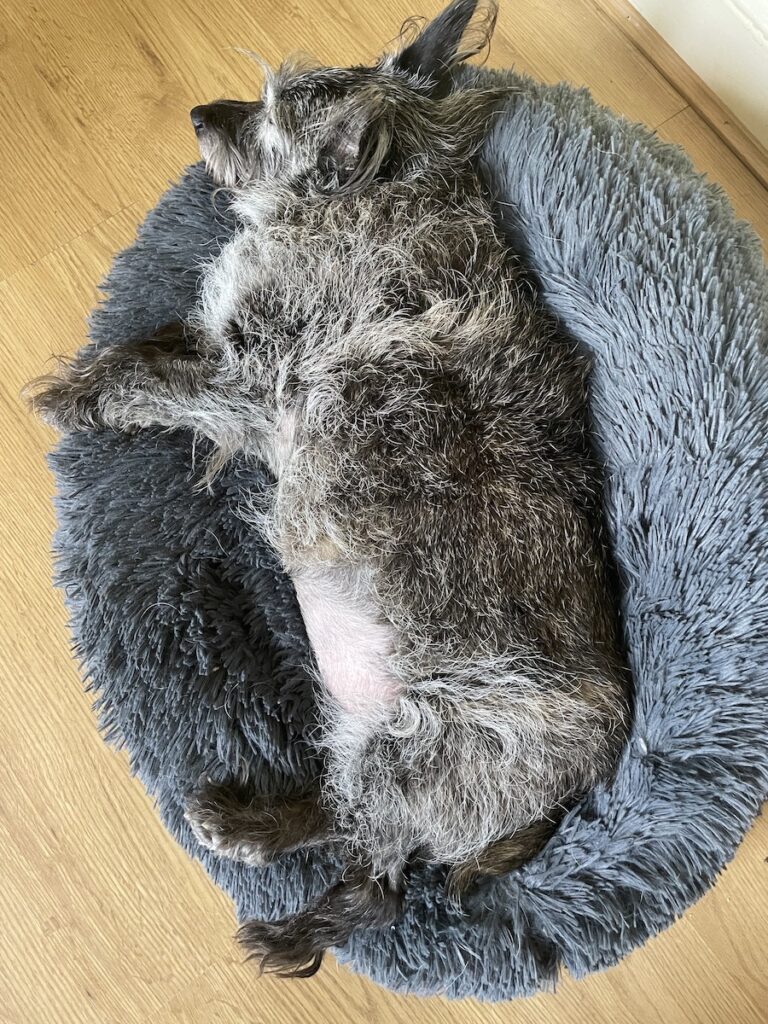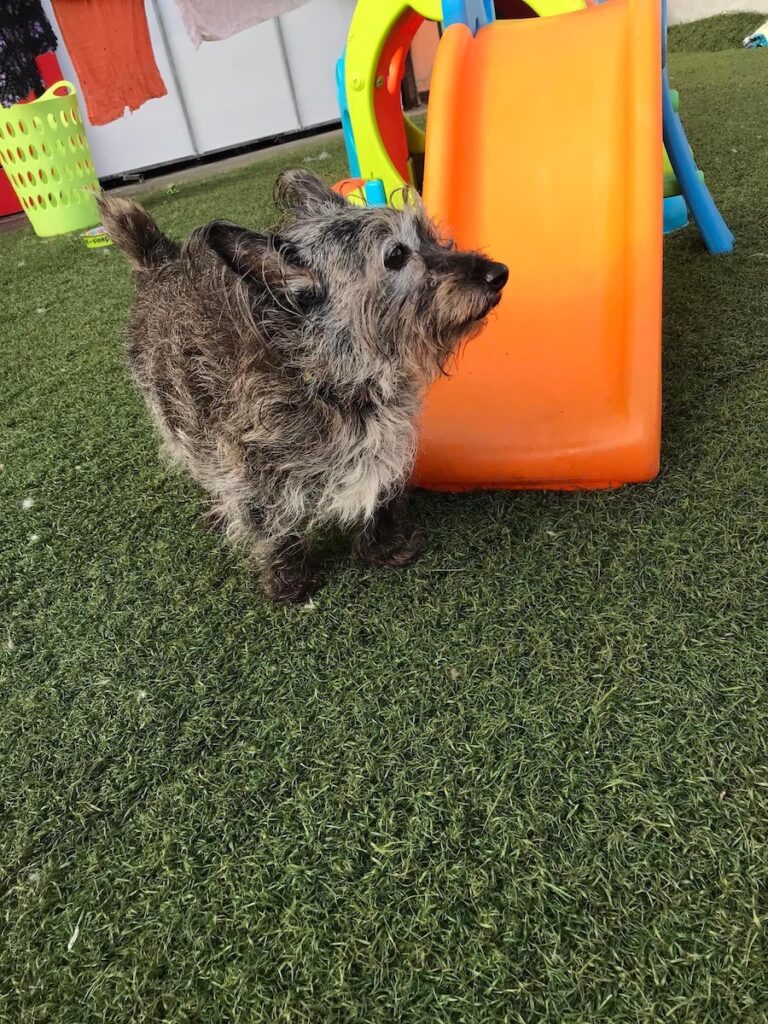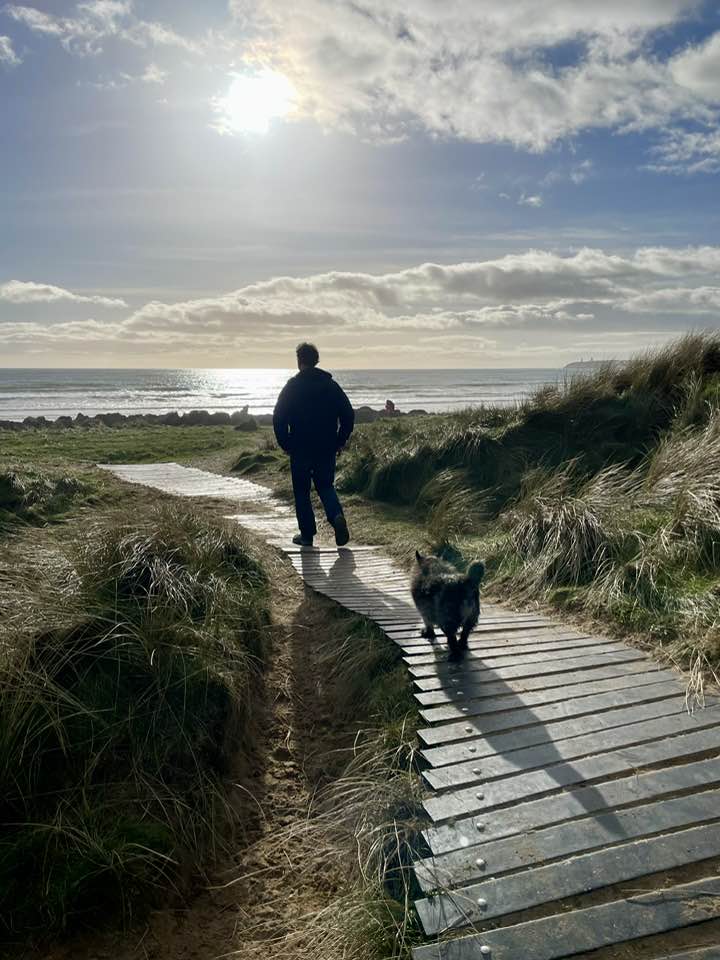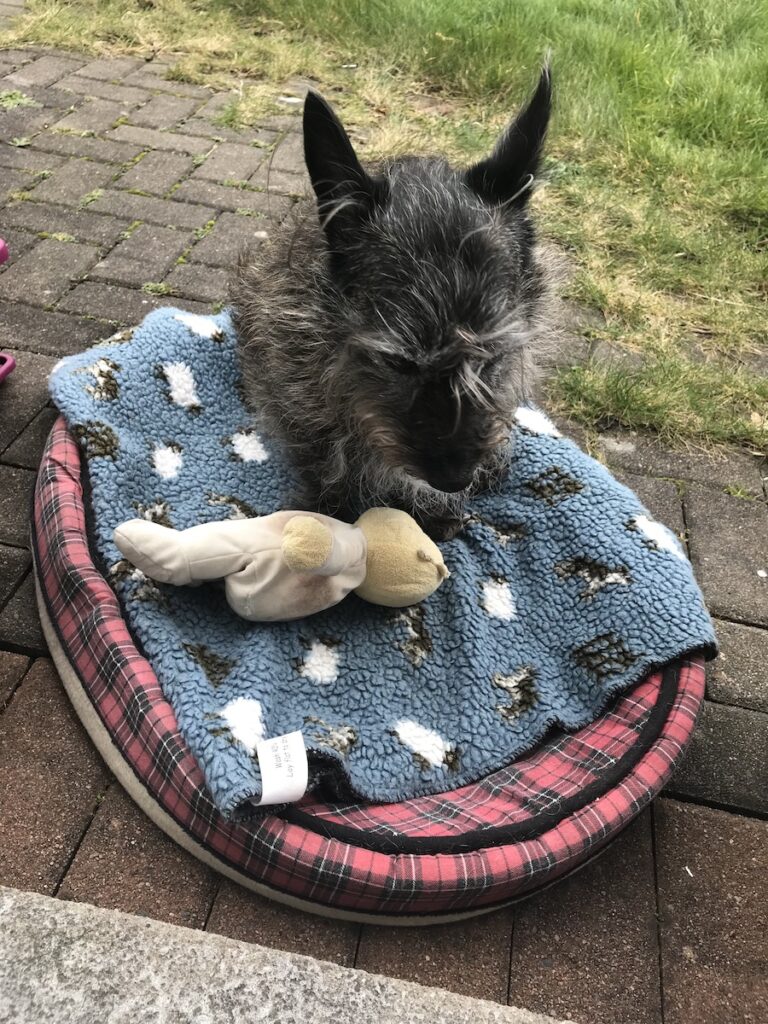In trying to understand what happened to our little friend Fredder, and how others can avoid such tragic circumstances I have compiled a list of our learnings from the death of our beloved dog and faithful companion.

I hope it will be of help to other dog owners & specifically cairn and cairn-cross dog owners whose dogs have some unique challenges because of their wilful natures and diminutive stature.
Medicated Dog Shampoos
These are commonly used to treat dermatitis, yeast infections and similar. They will contain anti-fungal ingredients such as Miconazole Nitrate, and disinfectants such as Chlorhexidine digluconate. Prescription only shampoos provided by your vet should be used sparingly. One pet blog described them as “not toxic but not safe either” and it very much depends on the dose. They should come with instructions as to the amount to use for your weight of dog. For example, one popular shampoo should be used on a cairn-sized dog in doses of no more than about a tablespoon at a time and no more than twice a week.
Sometimes vets will prescribe these as if they can be used as a regular shampoo but that isn’t the case in our sad experience. It is vital to rinse very well as these shampoos can create significant allergic reactions in dogs and give symptoms of poisoning including vomiting, nausea, lethargy and tremors. Rinsing means using fresh water from the tap to rinse off the residue. Make sure that feet are well-washed as dogs routinely groom their feet & paws and this is a possible source of poisoning.
Cones
If your cairn has dermatitis, and especially if they are being treated with a medicated shampoo, ask your vet for a soft cone collar to prevent the dog from licking or attacking areas that are itchy. It is almost impossible to stop a cairn from worrying dermatitis otherwise. If there is any residue from the medicated shampoo on the dog’s fur then behaviours such as licking or biting the treated area may harm your dog. Cairns are high energy little dogs which will attack a wound if it irritates them. Talk to your vet but it may be an idea for them to sleep with a soft cone on while the dermatitis is being treated.
IV Drip
If your dog displays any symptoms such as lethargy, nausea, tremors, or vomiting bring the dog to the vets immediately and suggest they treat for poisoning and give an IV drip. It’s typically a modest cost and can protect a dog’s organs such as kidneys and liver in the event of exposure to a toxic substance.
Treatment for poisoning
The treatment for suspected poisoning in a dog can include activated charcoal and an IV drip. Ingestion is one possibility but another is that the dog has actually contaminated itself with something from its travels. It’s not a bad idea to get your vet to clean your dog, particularly its paws, where there’s a case of suspected poisoning.
Don’t be fobbed off when seeking treatment for your dog
Don’t let a receptionist, veterinary nurse or any other clinic employee dissuade you from bringing a dog into a centre for treatment if you believe they are not well. Don’t accept an appointment for the following day or any other risky step. Clinics may try to triage away emergency calls but that’s at the risk of your dog. It is not safe to assume that the person you’re speaking to can remote diagnose an illness.
Pay attention to cannula placement
This is most important for small breeds such as terriers. If a dog is released by a vet to out-patient care with an cannula in-place, make sure the cannula doesn’t impede their ability to walk. The stress and harm to a dog from a misplaced cannula over more than 24 hours can be considerable. Front paws are better for cairns than hind legs as the latter are more likely to be impeded by cannula placement given the length of the average terrier’s legs.
Develop a relationship with the clinic principal
Ultimately, the quality and timeliness of emergency care can depend on whether you can reach out to a key member of the clinic to get support for your dog when they need it. As clinics move to a corporate model, they have more part-time staff on rostered hours rather than clinical staff who own the business, or are senior employees with large overtime payments. Part-time staff may not be able to help you or your dog in an emergency.
Be wary of corporate vet ownership
If you know the principal and they own the clinic, they will be able to make a decision purely on care grounds in an emergency. You may be able to reach them directly and get the support you need for your sick dog. In the corporate model, emergency services may be outsourced and you may find yourself with little or no support in a crisis. We will never use a corporate-owned veterinary clinic again if we can at all help it. Our experience of such ownership is that the clinics seek to reduce costs with a larger number of part-time rostered vets rather than more experienced vets earning overtime. Experience counts in veterinary practice.
Get answers to medical queries or go elsewhere
If your dog is experiencing medical issues which your vet simply cannot explain then ask for a referral to a specialist clinic. We did this once and it helped our dog considerably. We wish we had done it again in early 2024 when we got responses to queries that were less illuminating. Our experience is that most vets are too busy to follow up on medical issues that appear not to be causing a significant problem, even if those issues would reveal conditions requiring treatment. This doesn’t necessarily mean the vet is incompetent but if they can’t explain why something such as dermatitis is happening then that probably means there’s an underlying issue they cannot diagnose. In our case, we got no answers in 3 months when it would have been appropriate to refer us to a specialist (while our dog was still alive & well).
Be vigilant for signs your dog isn’t well
Cairns are tough little dogs that don’t want their owners (their pack) to think they are unwell. A cairn will push themselves really hard to avoid showing any weakness, potentially masking signs of illness such as infection or poisoning until it is too late. If your dog halts during a walk and won’t continue, this is a possible sign of illness, even if they seemed fine earlier in the day.
Go with your gut
Remember that the vets, nurses and clinic owner may offer sympathy if your pet becomes seriously ill or dies but only you will feel the bereavement as a huge loss. Go with your gut in treatment decisions to avoid any sense that you didn’t do enough for your furry friend.
Our learning
Fredder was an older dog but still fundamentally healthy based on various blood tests carried out every month. He was prescribed a strong medicated shampoo without adequate warning as to its potential adverse effects. He displayed all the adverse reactions of medicated shampoo ingestion including vomiting, fatigue, lowered body temperature and tremors. A recent search of internet fora and product reviews show other dog & cat owners reporting some severe side effects from the same product including damage to the eyes, liver and skin. Perhaps they are rare but we were never made aware of the risks.
We saw 3 different vets over 3 days and none of them realised the issue was likely poisoning, even though their clinic prescribed a product that could harm our little fella. Not even his fur falling out in patches was enough to get them to realise he may be having a reaction to that product.
Instead the vets acted like kidney failure was inevitable given his age. None of them thought to wash him down even though we noted we thought he had been poisoned. Tragically, we only figured out the likely cause the day after he died, having spent a week desperately seeking to understand why his kidneys were suddenly failing.
Owners have to take extra care with older dogs to help them avoid and overcome injuries (including chemical) that their younger selves may have overcome more easily. For us the great sadness of this is not just Fredder’s loss but the recognition that his death at that time may have been avoided. If the above guide helps any other dog owner then that will be some comfort.


